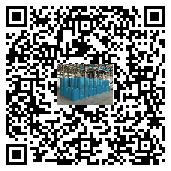Using Water-Based Nonionic Penetrants Correctly: Remember These 5 Things to Remember
While water-based nonionic penetrants are easy to use, there are several key details you need to pay attention to
in order to maximize their effectiveness and avoid pitfalls. These details may seem simple, but they can prevent waste,
material damage, and even safety hazards. Remember them now.
1. Don't randomly add concentration; adjust according to your needs.
Many people believe that "the more you add, the faster the penetration." This is completely unnecessary. Its effective
concentration is typically between 0.1% and 2%, depending on the intended use. For textile dyeing, adding 0.5% to 1%
ensures uniform dye penetration. Adding more can cause excessive expansion of fabric fibers and a rough feel. For
agricultural pesticides, 0.1% to 0.3% is sufficient to enhance efficacy. Exceeding this concentration may cause burn
spots on crop leaves. It's recommended to test a small amount of solution first to determine the appropriate dosage
before using in bulk. This saves money and minimizes effectiveness.
2. Check environmental compatibility and don't ignore temperature and pH.
Although it's stable, it has its own quirks. Most models are suitable for temperatures between 5 and 80°C. If used in
high-temperature environments (such as the dyeing process in textile factories, which can exceed 90°C), choose a
heat-resistant model, otherwise it will become ineffective. Regarding pH, avoid strongly acidic environments with a
pH lower than 3 and strongly alkaline environments with a pH higher than 12. For example, when removing rust
from metal, most rust removers are strongly acidic, and adding ordinary penetrants directly will cause them to
decompose. Therefore, choose an acid-resistant model. Read the product instructions before use to ensure it
matches the intended environment.
3. Before using with other chemicals, perform compatibility tests.
It's often mixed with detergents, pesticides, paints, and other chemicals, but not all are compatible. For example,
mixing it with bleach containing strong oxidizing agents may cause a reaction, reducing the effectiveness of both.
When mixing it with certain oil-based pesticides, separation and precipitation may occur if not tested in advance.
The correct method is to mix a small amount of penetrant and the reagent to be mixed in a cup, stir thoroughly,
and observe for 10 minutes. If no abnormalities occur, prepare a larger amount.
4.take basic protective measures during operation and be careful not to be careless.
Although it is low-irritant, it should not come into direct contact with skin or be ingested. When preparing
solutions in industry, wear ordinary rubber gloves to avoid prolonged contact with hands. If splashed into eyes,
immediately rinse with clean water for 10 minutes. For household cleaning products containing penetrant
(such as laundry detergent), if you have sensitive skin, it is also recommended to wear gloves and wash hands
immediately after use. Store in a cool, dark place, out of reach of children and pets, and clearly state "Not for
consumption" on the label.
5. handle thoroughly after use to avoid residual effects.
After the product has been used, some residues require cleaning: After dyeing textiles, rinse them with clean
water to remove any remaining penetrant, otherwise the fabric may have a slight odor. After cleaning metal parts,
wipe them dry with a clean cloth or air dry them. While small amounts of penetrant residue will not affect
subsequent processing, timely cleaning can prevent dust from accumulating. In applications like wall coatings and
agricultural spraying, the penetrant will naturally dissolve or evaporate, requiring no additional treatment; simply
follow normal procedures.
Conclusion
In fact, as long as you remember these key points: "Adjust the concentration according to your needs, select the
type based on the environment, test before mixing, and apply protective measures to remove any residue," you
can easily use a water-based nonionic penetrant. It's not an additive you can just add. Attention to these details
will ensure it truly becomes a helpful aid in production and daily life, rather than a troublemaker.


